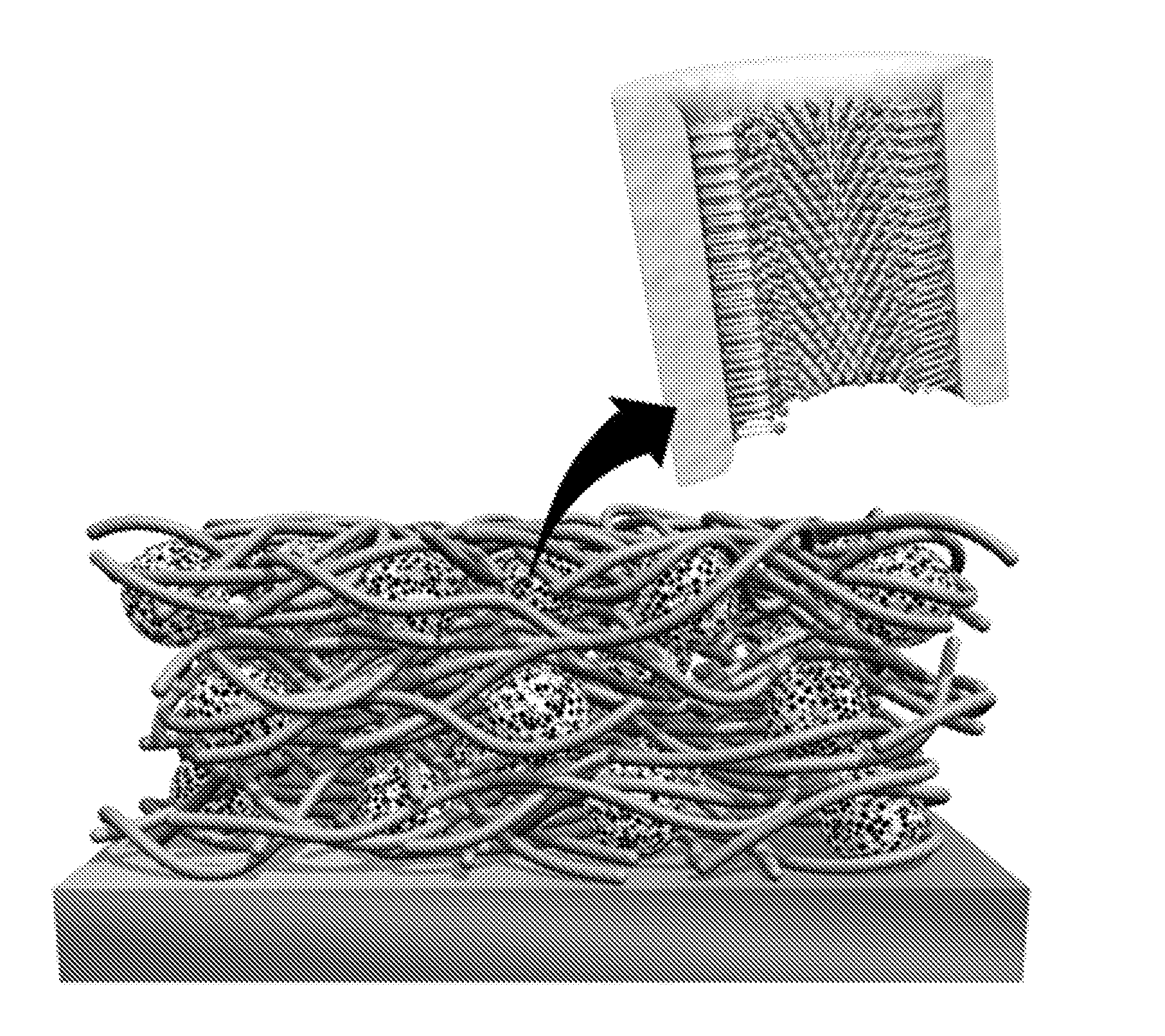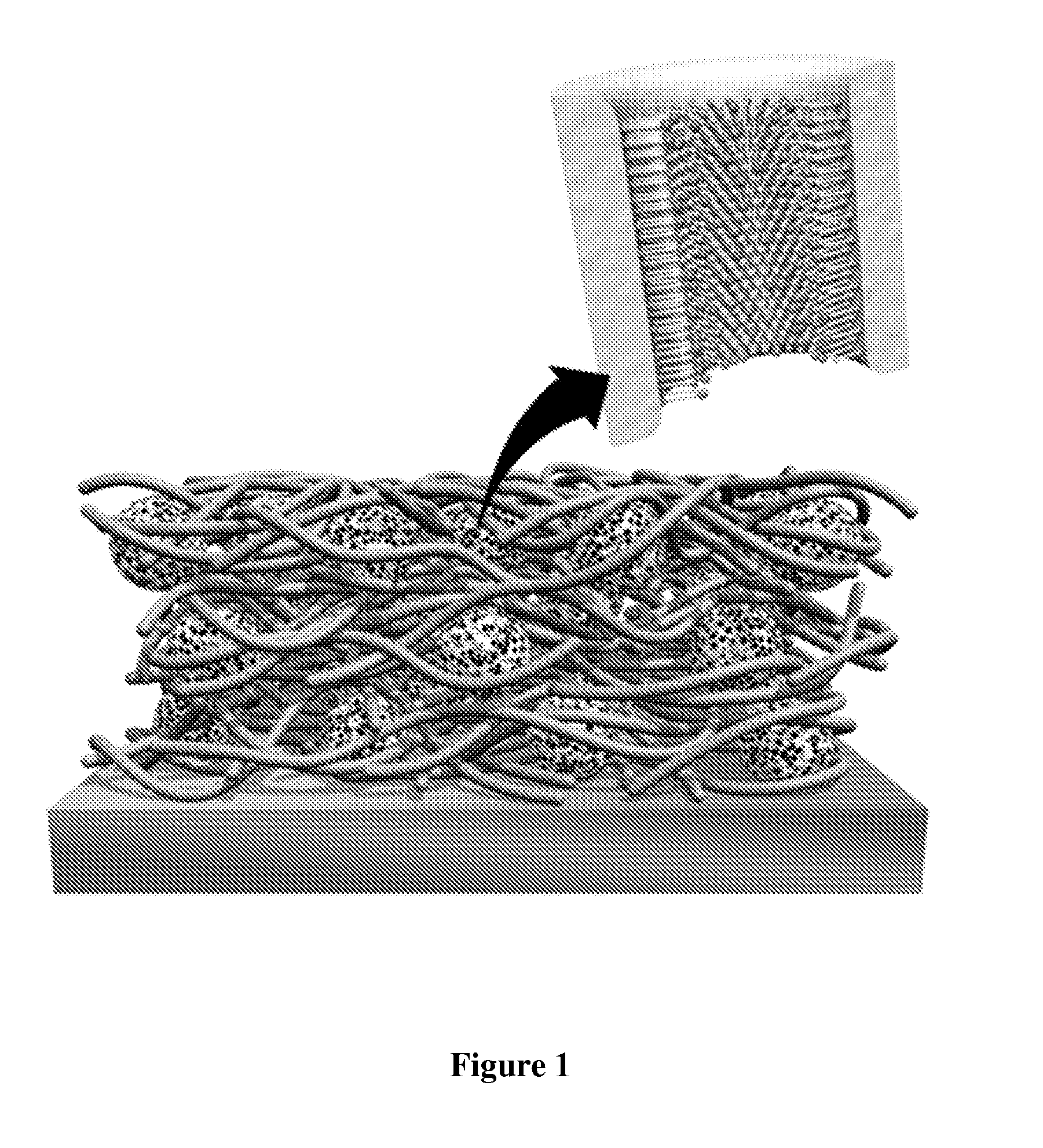Porous multi-component material for the capture and separation of species of interest
a multi-component, porous technology, applied in the direction of separation process, pretreatment surface, metal material coating process, etc., can solve the problems of nanostructured materials that are nanomaterials that are not useful after synthesis, and the form of most nanostructured materials is not useful for most applications, etc., to achieve the effect of improving captur
- Summary
- Abstract
- Description
- Claims
- Application Information
AI Technical Summary
Benefits of technology
Problems solved by technology
Method used
Image
Examples
Embodiment Construction
[0033]The present invention is directed to materials and methods that provide improved capacity, selectivity, stability and kinetics for, among other things, analytical, extraction and separation applications. The materials can be applied to catalysis and other chemical reaction applications. In one embodiment, the material is comprised of nanostructured materials combined with a porous polymeric binder for adhesion and stability.
[0034]The nanostructured materials have high surface area and specific surface chemistries that provide a large a concentration of sites for analyte or material capture and / or chemical processing. The porous polymer, typically 10-30% wt., provides a binder for the nanomaterials. Using a porous polymer binder, the thin film composite overcomes one of the primary challenges to using nanomaterials—integration and stabilization into useful devices / form factors without blocking the chemically reactive sites. While the material can be formed into almost any shape...
PUM
| Property | Measurement | Unit |
|---|---|---|
| thickness | aaaaa | aaaaa |
| thickness | aaaaa | aaaaa |
| particle sizes | aaaaa | aaaaa |
Abstract
Description
Claims
Application Information
 Login to View More
Login to View More - R&D
- Intellectual Property
- Life Sciences
- Materials
- Tech Scout
- Unparalleled Data Quality
- Higher Quality Content
- 60% Fewer Hallucinations
Browse by: Latest US Patents, China's latest patents, Technical Efficacy Thesaurus, Application Domain, Technology Topic, Popular Technical Reports.
© 2025 PatSnap. All rights reserved.Legal|Privacy policy|Modern Slavery Act Transparency Statement|Sitemap|About US| Contact US: help@patsnap.com



